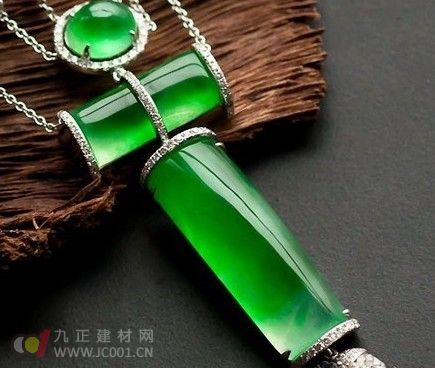Jade has long been celebrated as the epitome of Eastern beauty, possessing a unique charm that sets it apart from other gemstones like Baiyu. Its appeal is not limited to China but extends across Southeast Asia, where it has captured the hearts of many. In recent years, with rising interest in jade as an investment, its value has grown significantly. Due to the depletion of high-quality jade deposits, jade prices began to rise as early as the 1990s, even before Hetian jade became widely popular. Over the past decade, only the finest jade has become a symbol of wealth and status.
Does this mean jade is no longer worth collecting or investing in? Absolutely not. Although the supply of quality jadeite from Myanmar has decreased, and the price of good jadeite has increased, the demand remains strong. As a result, jade still holds significant value for collectors and investors alike.

When it comes to identifying real jade, the first step is to determine whether it's genuine. It's crucial to distinguish between A-grade, B-grade, and C-grade jade. Only when you're certain it's A-grade can you truly assess its quality.
A-grade jade retains its natural structure, color, and texture, with only minimal processing such as cutting and carving. B-grade jade, on the other hand, undergoes bleaching and filling, which alters its appearance and weakens its structural integrity. C-grade jade is artificially colored using dyes or other chemical treatments. While B and C grades may look appealing at first glance, they lack the long-term value of A-grade jade, which is the only type truly worth collecting.
Today, the jade market is flooded with various jade products. Many low-end pieces are priced at just tens or hundreds of yuan, often made from inferior materials like Xinkengshan jade. These items usually have poor texture, water content, and color, and their craftsmanship is subpar. Most of them are B or C-grade, making them inexpensive but also lacking in value. For casual collectors, these affordable pieces might be suitable, but they often end up being discarded after a short time. The key is to focus on quality rather than quantity. If you have the budget, it's better to invest in a few high-quality pieces rather than buying a lot of low-value items.
The author believes that true jade collection isn't about spending a lot of money, but about making smart choices. If you're willing to spend on something that's genuinely valuable, it's far better than accumulating a pile of cheap, low-quality items. Of course, the most important thing is to ensure what you're buying is authentic.
**Tips for Jade Collecting:**
1. **Know the difference between A, B, and C grade:** A-grade jade has a natural glassy luster. B and C-grade jade, on the other hand, may appear dull or oily due to chemical treatments. Also, naturally colored jade often has a cloud-like pattern, so be cautious if you see unusual colors or textures.
2. **Equip yourself with tools:** If you want to evaluate jade yourself, get a magnifying loupe—10x is sufficient, but 20x or 30x is better. Avoid anything over 30x, as it’s too powerful and doesn’t help much. You’ll also need a strong flashlight with white light to examine the surface and internal structure of the jade.
3. **Always get an appraisal:** After purchasing, take your jade to a professional appraisal center. Their expertise and advanced equipment will give you peace of mind and ensure you’re getting a genuine piece.
Collecting jade is not just about the price—it’s about understanding the value, knowing how to identify quality, and making informed decisions. With the right knowledge and tools, you can build a meaningful and valuable collection.